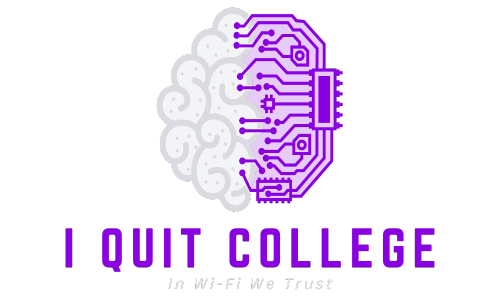Understanding the importance of adapting to market changes is crucial for entrepreneurs. In today’s fast-paced business world, being able to anticipate and respond to shifts in the market is essential for sustained growth and success. Whether it’s changes in consumer behavior, emerging trends, or disruptive technologies, staying ahead of the curve requires a proactive approach.
In this article, we will explore key strategies for navigating market shifts in entrepreneurship, including embracing a growth mindset, fostering innovation, staying informed, maintaining flexibility in operations, and listening to customers. By implementing these strategies, entrepreneurs can adapt to market changes and position their businesses for long-term success.
Key Takeaways:
- Adapting to market changes is crucial for sustained business growth.
- Embracing a growth mindset allows entrepreneurs to view challenges as opportunities for innovation and growth.
- Fostering innovation helps businesses stay ahead of the competition and find new solutions.
- Staying informed about market trends and consumer behavior enables businesses to identify opportunities and tailor their strategies accordingly.
- Having flexibility in business operations allows for quick adaptation to changing market conditions.
Embracing a Growth Mindset
Adopting a growth mindset is essential for entrepreneurs. It involves being open to learning, viewing challenges as opportunities, and embracing change. Successful entrepreneurs like Elon Musk and Jeff Bezos exemplify this mindset by constantly innovating and adapting their strategies.
“The mindset is crucial because it’s not about just accepting that you need to embrace new ideas, but celebrating the fact that you’re going to fail while you’re trying those new ideas,” says Bezos.
Entrepreneurs with a growth mindset are not afraid to take risks and explore uncharted territories. They see setbacks as learning experiences and use them to fuel their growth. By embracing a growth mindset, entrepreneurs can unlock their full potential and overcome any obstacles that come their way.
| Benefits of Embracing a Growth Mindset | Examples |
|---|---|
| Enhanced creativity and problem-solving abilities | Elon Musk constantly pushes the boundaries of innovation with his companies Tesla, SpaceX, and Neuralink. |
| Increased adaptability to change | Jeff Bezos transformed Amazon from an online bookstore into a global e-commerce giant by continuously evolving its business model. |
| Resilience in the face of challenges | Sara Blakely, founder of Spanx, persevered through numerous rejections to build a billion-dollar shapewear brand. |
By adopting a growth mindset, entrepreneurs can stay ahead of the curve, seize opportunities, and drive their businesses towards success in an ever-evolving business landscape.
Fostering Innovation
Innovation is a critical factor in successfully adapting to market changes. By encouraging creativity and seeking out innovative solutions, businesses can stay ahead of the competition and drive business growth. Companies like Apple have built their success on a foundation of innovation, constantly pushing boundaries, and revolutionizing industries.
At Apple, innovation is not just a buzzword; it is ingrained in the company’s DNA. The company constantly strives to develop breakthrough products and services that transform the way we live and work. Their commitment to creative problem-solving has led to revolutionary products like the iPhone, iPad, and Apple Watch, which have not only reshaped entire industries but also fueled the company’s rapid growth.
“Innovation distinguishes between a leader and a follower.” – Steve Jobs
Apple’s success story serves as an inspiration for entrepreneurs seeking to foster innovation within their own businesses. By encouraging a culture of innovation and prioritizing creative problem-solving, companies can set themselves apart from the competition and capitalize on new opportunities.
The Power of Innovative Solutions
Embracing innovative solutions enables businesses to address complex challenges and create unique value propositions. By thinking outside the box and finding novel approaches to problems, companies can differentiate themselves in the market and attract customers with innovative offerings.
For example, consider Netflix’s innovative approach to content delivery. Instead of relying on traditional distribution channels, Netflix disrupted the entertainment industry by introducing a streaming service that allowed customers to access a vast library of movies and TV shows anytime, anywhere. This innovation not only transformed user experiences but also propelled the company to become a global entertainment giant.
Innovation drives business growth by opening up new revenue streams, expanding market reach, and enhancing customer loyalty. When businesses prioritize creative problem-solving and encourage employees to think innovatively, they create a dynamic environment conducive to generating groundbreaking ideas and seizing opportunities for growth.
The Role of Creative Problem-Solving
Creative problem-solving is an integral part of fostering innovation. When faced with challenges, businesses must encourage their teams to think critically and explore unconventional solutions. By embracing a creative problem-solving mindset, entrepreneurs can discover innovative strategies that drive business growth.
Take Amazon, for example. The company encountered the challenge of delivering products quickly and efficiently to customers. In response, they pioneered the concept of using drones for product delivery, an innovative solution that revolutionized the e-commerce industry. By thinking creatively and finding new ways to solve existing problems, Amazon has continually expanded its market presence and solidified its position as a global leader.
By fostering innovation and promoting creative problem-solving within their organizations, entrepreneurs can unlock new possibilities and drive sustained business growth in an ever-changing market.
Staying Informed
In order to navigate market changes effectively, entrepreneurs must stay informed about the latest market trends, consumer behavior, and industry insights. By keeping a close eye on these factors, businesses can identify emerging opportunities and adjust their strategies accordingly for sustained growth and success. Here are some key ways to stay informed:
- Attend Conferences: Attending industry conferences and events allows entrepreneurs to stay up-to-date with the latest developments and trends in their respective fields. Conferences provide a platform for networking with industry professionals, gaining valuable insights, and discovering new opportunities.
- Engage with Thought Leaders: Following and engaging with thought leaders in the industry can provide valuable insights and perspectives on market changes. Engaging in discussions, reading their articles or blog posts, and participating in webinars or podcasts hosted by thought leaders can offer fresh perspectives and help businesses stay informed.
- Stay Connected to Industry Publications: Subscribing to industry publications, such as trade journals or specialized magazines, can provide a steady stream of industry insights, analysis, and trends. These publications often feature expert opinions, case studies, and market reports, helping entrepreneurs gain a deeper understanding of market dynamics.
By actively seeking out these sources of information, entrepreneurs can make more informed decisions and adapt their strategies to meet evolving consumer needs and market trends.
Here is a related quote from Steve Jobs:
“Innovation distinguishes between a leader and a follower.”
Remember, staying informed is key to navigating market changes effectively and staying ahead of the competition.
Flexibility in Business Operations
When it comes to adapting to market changes, having flexible business operations is crucial. This means being able to quickly respond to shifts in the market and explore new opportunities that arise. Businesses that can effectively adapt to change are more likely to thrive in today’s dynamic business landscape.
One key aspect of flexibility is the ability to explore new distribution channels. By diversifying the ways in which products or services reach customers, businesses can tap into new markets and reach a wider audience. This could involve expanding into e-commerce platforms, partnering with other retailers, or even exploring direct-to-consumer strategies.
Additionally, offering flexible work options is another way to adapt to change. The COVID-19 pandemic has shown the importance of remote work capabilities, and businesses that were able to quickly implement remote work policies were able to continue operations uninterrupted. Embracing flexible work options not only enables businesses to attract and retain talent, but also provides the agility needed to navigate disruptions.
Furthermore, diversifying product offerings can help businesses adapt to changing customer needs and preferences. By expanding the range of products or services available, businesses can cater to a broader customer base and reduce reliance on a single product or market segment. This diversification also mitigates the risk of being heavily impacted by changes in a specific industry or market.
“Flexibility is the key to success in today’s fast-paced business environment. By being agile, businesses can quickly adapt to changing circumstances and seize new opportunities.”
– Business Leader Magazine
Diversifying Product Offerings
A great example of a company that has successfully adapted its business model to stay relevant and thrive is Netflix. Originally a DVD rental service, Netflix recognized the shift in consumer behavior towards streaming services. By diversifying its product offering and investing in original content production, Netflix transformed itself into a leading streaming platform, attracting millions of subscribers worldwide.
Exploring New Distribution Channels
Another example is Adidas, a global sportswear brand. With the rise of e-commerce, Adidas embraced the changing retail landscape by expanding its online presence and partnering with popular e-commerce platforms. This allowed the company to reach customers directly, bypassing traditional retail channels and adapting to the growing trend of online shopping.
Table:
“`markdown
| Company | Flexibility in Business Operations | Successful Adaptation |
| ——— | ———————————– | ————————————————————– |
| Netflix | Expanding from DVD rentals to | Transforming into a leading streaming platform |
| | streaming services | |
| Adidas | Embracing e-commerce and | Reaching customers directly through online channels |
| | partnering with e-commerce platforms| |
“`
In order to succeed in today’s rapidly changing business landscape, businesses must prioritize flexibility in their operations. By embracing agile practices and exploring new opportunities, businesses can adapt to market changes and achieve sustained growth.
Engage and Listen to Your Customers
Customers are the driving force behind successful businesses. Their feedback and evolving needs shape the direction of companies and their offerings. To navigate market changes effectively, entrepreneurs must adopt a customer-centric approach, actively engaging with their target audience and understanding their preferences.
“Our customers are our most valuable asset. By listening to their feedback and adapting our strategies, we ensure that we continue to meet their evolving needs and exceed their expectations,” says Sarah Johnson, CEO of Johnson & Co.
Engaging with customers can be done through various channels, such as:
- Social media interactions: Actively participating in conversations, addressing customer inquiries, and leveraging social listening tools to understand sentiment and trends.
- Surveys and feedback forms: Gathering valuable insights by directly seeking customer opinions and suggestions. This provides invaluable information for product or service enhancements.
- Customer support channels: Promptly addressing customer queries, concerns, or complaints through efficient and reliable customer support systems. This fosters trust and loyalty among customers.
By incorporating these customer-focused practices into their operations, entrepreneurs can gain a deeper understanding of their target market, leading to the development of products and services that cater to their customers’ evolving needs. Furthermore, by fostering strong customer relationships and providing exceptional experiences, businesses can build a loyal customer base and gain a competitive edge in the market.
“We prioritize the voice of our customers in every decision we make. Their feedback drives our innovation, ensuring that our offerings address their pain points and deliver real value,” shares Michael Sullivan, Founder of Sullivan Enterprises.
A customer-centric approach not only enables businesses to adapt to market changes successfully but also creates a solid foundation for long-term growth and sustainability. By continuously engaging with customers, embracing their feedback, and tailoring their offerings to meet their evolving needs, entrepreneurs can position themselves as trusted partners and achieve lasting success in the dynamic business landscape.
Conclusion
Navigating market changes is crucial for long-term success in entrepreneurship. By embracing a growth mindset and fostering innovation, businesses can adapt to market shifts and seize new opportunities for sustained growth. Companies like Apple and Netflix have demonstrated the power of adaptation and innovation in navigating market changes, setting the stage for their continued success.
Staying informed about market trends, consumer behavior, and industry news is essential for entrepreneurs to make informed decisions and stay ahead of the competition. By remaining flexible in their business operations, entrepreneurs can quickly respond to market shifts and explore new avenues for growth. Additionally, engaging with customers and actively seeking their feedback allows businesses to understand their evolving needs, leading to a customer-centric approach that drives success.
In a dynamic and ever-changing business landscape, successful navigation involves a combination of strategies. By implementing these approaches, entrepreneurs can confidently sail through the storm and achieve sustained business growth. Adapting to market changes is not only about surviving, but also about thriving in the face of uncertainty. With the right mindset and a focus on innovation, businesses can embrace the challenges and find new paths to success.
FAQ
How can entrepreneurs adapt to market changes?
Entrepreneurs can adapt to market changes by embracing a growth mindset, fostering innovation, staying informed, maintaining flexibility in operations, and listening to customers.
What is a growth mindset?
A growth mindset involves being open to learning, viewing challenges as opportunities, and embracing change. Successful entrepreneurs like Elon Musk and Jeff Bezos exemplify this mindset by constantly innovating and adapting their strategies.
How does innovation help businesses adapt to market changes?
Innovation plays a key role in adapting to market changes. By encouraging creativity and finding new solutions, businesses can stay ahead of the competition. Companies like Apple are known for their innovative approach, constantly pushing boundaries and revolutionizing industries.
How can entrepreneurs stay informed about market changes?
Entrepreneurs can stay informed about market changes by keeping track of market trends, consumer behavior, and industry news. Attending conferences, engaging with thought leaders, and staying connected to industry publications are all ways to gain valuable insights.
Why is flexibility important in business operations?
Having flexible business operations is crucial for adapting to market changes. This flexibility allows businesses to respond quickly to shifts in the market, such as exploring new distribution channels, offering flexible work options, or diversifying product offerings. Companies like Netflix have successfully adapted their business models to stay relevant and thrive.
How can entrepreneurs engage with customers to adapt to market changes?
Entrepreneurs can engage with customers and actively seek feedback to understand their evolving needs and preferences. Using surveys, social media interactions, and customer support channels, entrepreneurs can gather insights to tailor their offerings and provide exceptional customer experiences.
What is the importance of adapting to market changes in entrepreneurship?
Navigating market changes is essential for long-term success in entrepreneurship. By embracing a growth mindset, fostering innovation, staying informed, maintaining flexibility in operations, and listening to customers, businesses can adapt to market shifts and seize new opportunities for growth. Successful entrepreneurs like Apple and Netflix have demonstrated the power of adaptation and innovation in navigating market changes.






